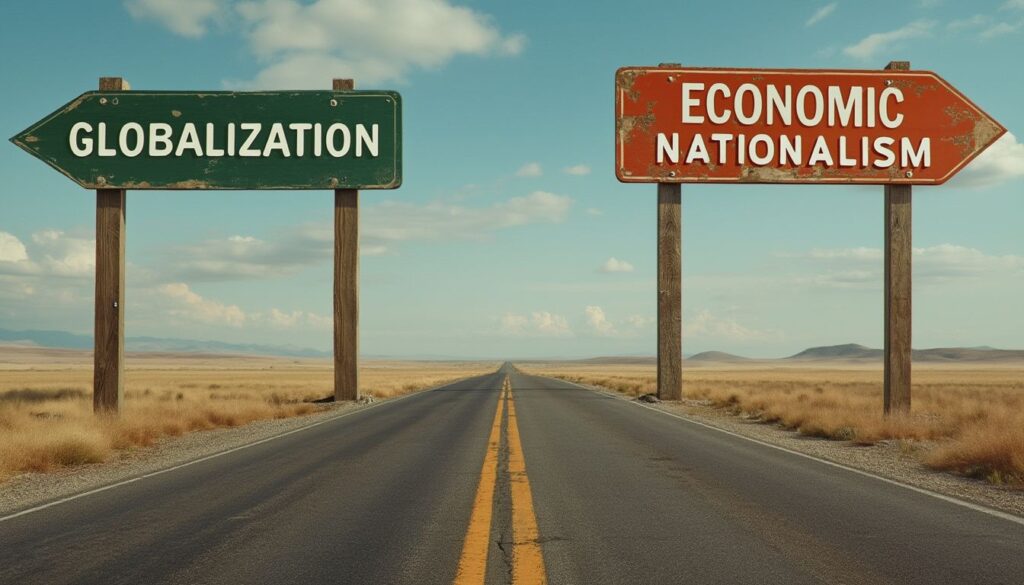On May 15th, 2023, the House of Commons voted on a Bloc Quebecois motion condemning the Century Initiative, an immigration lobby which wants to raise Canada’s population to 100 million by 2100.
The motion failed, with 138 Bloc and Conservative MPs voting in favour, and 168 Liberal and New Democrat MPs voting against. This was a fairly predictable outcome.
What seemed out of place, however, were the two Green MPs – Elizabeth May of Saanich-Gulf Islands and Mike Morrice of Kitchener Centre – who voted against the motion. How could a political party founded to protect the environment be either supportive of, or unconcerned about, the concept of increasing Canada’s population to 100 million?
Perhaps it was not that the Green Party MPs support this population growth project, but were just concerned about some objectionable detail in the motion put forward by the Bloc?
To see if this is the case, I will quote the motion in full:
“That, given that,
(i) the Century Initiative aims to increase Canada’s population to 100 million by 2100,
(ii) the federal government’s new intake targets are consistent with the Century Initiative objectives,
(iii) tripling Canada’s population has real impacts on the future of the French language, Quebec’s political weight, the place of First Peoples, access to housing, and health and education infrastructure,
(iv) these impacts were not taken into account in the development of the Century Initiative and that Quebec was not considered,
the House reject the Century Initiative objectives and ask the government not to use them as a basis for developing its future immigration levels.”

There was nothing objectionable in the motion. The Bloc merely argued that the dramatic immigration increase envisioned by the Century Initiative would sideline Quebec, First Nations, and the French language. This seems undeniable. The motion also mentions the strain that excessive immigration-driven population growth places on housing, healthcare, and education – an uncontroversial argument now almost universally accepted in Canada.
A transcript of House of Commons proceedings from May 11th, 2023, the day the motion was first introduced, shows that Green MPs Elizabeth May and Mike Morrice provided sparse commentary on it. Mike Morrice commented on the motion’s linking of immigration and housing, speaking to the importance of building more housing. Elizabeth May linked the motion to the issue of “climate refugees”, and in another statement said she supported immigration as long as the government was ready for it:
“Madam Speaker, on the issue of immigration, we have legitimate concerns about some portions of our population. The question is whether we are ready. Are we ready in terms of the need for shelter, affordable housing, support for people who need to learn English or French, and support for the cultural needs of everyone? I am, of course, in favour of immigration, but the question is whether the Government of Canada is ready to meet the needs of new Canadians.”
Based on their vote against the Bloc motion, and their statements about it, one is forced to conclude that the Green MPs do not object to the Century Initiative population growth project – provided that Ottawa is “ready” for it, and spurs the construction of copious amounts of housing.
More broadly, it is clear that the Green Party of Canada does not have a track record of pushing for limits to immigration-driven population growth. At various times, the Green Party has put forth proposals to eliminate the Temporary Foreign Worker (TFW) program. This position is not part of an overall commitment to controlling population growth, however, but rather has been expressed in terms of ethical concerns to do with this specific immigration program. When the Green Party pledged in 2019 to scrap the program, this was paired with a promise to increase the number of permanent economic immigrants!
In a Party Leader Q & A organized by Student Vote Canada in 2019, Elizabeth May summed up the Green Party line on immigration: “We are as a party very much in favour of immigration”. She then went on to cite the oft-repeated “ageing population” line, and even floated the idea that immigrants could bolster communities with declining populations in places like northern Quebec.
The Green Party should change its tune. Canada’s immigration policy is based on a model of large-scale, never-ending population growth which enriches developers and large corporations while wreaking havoc on our natural environment.
In 2022, our population grew by 825,000. In 2023, it grew by a whopping 1.2 million – 97.6% of which was from immigration. The last time Canada saw population growth of more than 600,000 in a single year was 1949 – and that’s only because Newfoundland joined Confederation!
The effects of this out-of-control growth are numerous, but in the interest of brevity I will briefly describe three.
Farmland loss
Despite having the second-largest landmass in the world, just 4.3 per cent of Canada is arable. Rapid population growth is leading to the paving of scarce farmland which we will never get back.
Ontario alone is losing 319 acres of farmland a day – the equivalent of nine family farms every week. According to the Alberta Land Institute, that province lost more than 56,000 acres of agricultural land from 2011 to 2020, and another 32,299 acres from 2021 to 2022.
According to Canadians for a Sustainable Society, an organization which raises awareness of the environmental and social effects of immigration-driven population growth, Canada loses 530 square kilometres of prime farmland for every million people added to the population.
Farmland loss endangers Canada’s food security, forcing us to increase our reliance on food carried from abroad in gas-guzzling trucks or ships – including from countries with far looser environmental regulations on agricultural operations.
Greenhouse gas emissions
By supporting Canada’s project of endless population growth, the Green Party is sabotaging one of its key policies: reducing greenhouse gas emissions.
As of 2019, the average Canadian had a carbon footprint of 14.2 tonnes of C02 per year. To measure the impact of immigration on CO2 emissions, simply multiply that number by the number of immigrants added to our population. Multiply it by roughly 825,000 in 2022, and about 1.2 million in 2023. This does not even consider the global rise in emissions – a significant proportion of immigrants come to Canada from developing countries with a smaller per-person carbon footprint, and increase their carbon footprint upon arrival.
But it gets much worse. Like everyone else, immigrants need housing. According to a report by RBC, Canada will need to build a jaw dropping 5.8 million new homes by 2030 to meet the needs of our rapidly growing population. If built with current practices and codes, these millions of apartments and detached houses will add up to 18 million tonnes of greenhouse gas emissions to our carbon footprint annually. That does not even include the emissions from the production of the cement and steel used to build them!
In fact, according to analysis by Canadians for a Sustainable Society, large-scale immigration to Canada is responsible for more of an increase in carbon emissions than the oil sands. It’s simple: Canada can’t drastically reduce emissions and drastically increase its population simultaneously.
Destruction of habitat and biodiversity
There are two ways to accommodate immigration driven-population growth: urban sprawl or densification. Both of these housing strategies contribute to the degradation of the natural environment.
We have been witnessing the effects of urban sprawl for many years – from southern Ontario to British Columbia’s Lower Mainland, from Calgary to Winnipeg, and now even in some parts of Atlantic Canada. The percentage of Canada consisting of “settlement and human infrastructure” soared 11% from 2000 to 2015. Canada rightly races to the front of the line to condemn the chain sawing of the Amazon rainforest – while at the same time paving over our own forests, wetlands, and grasslands to build new subdivisions.
Some people propose densification as an alternative. Even if this strategy were helpful in reducing the environmental impacts of huge amounts of new housing units, in order for it to actually replace urban sprawl, densification would need to be introduced in all parts of the country. Housing is a provincial issue, and this level of cooperation among provinces is highly unlikely. As long as high immigration drives up the population, there will be urban sprawl in some parts of the country.
It is worth pointing out, however, that in practice densification has serious environmental drawbacks. To accommodate British Columbia’s astronomic population growth, Premier David Eby’s NDP government recently abolished single-family zoning in all municipalities with more than 5,000 residents. Three to six residential units are now allowed on what were previously single-family lots. A report by The Narwhal, an independent media outfit, warns that the flood of development unleashed by this change could “trigger a ‘catastrophic’ loss of urban trees”.
Just as in the other two reasons delineated in this article, there is a simple relationship between unsustainable immigration and damage to the environment.
The Green Party was founded to ensure that there would be a clear and unequivocal voice for Canada’s environment among the cacophony of political representatives who let environmental issues take a backseat to other concerns. By failing to criticize Canada’s unsustainable immigration policy, whether because of a fear of infringing political correctness norms or a genuine but baffling belief in massive population growth, the party is not living up this legacy.
We must choose between kowtowing to the model of endless immigration-driven population growth pushed by corporate interests and developers or protecting Canada’s wilderness, food security, countryside, and wide open spaces for future generations.
It should be an easy choice.
All content on this website is copyrighted, and cannot be republished or reproduced without permission.
Share this article!




The truth does not fear investigation.
You can help support Dominion Review!
Dominion Review is entirely funded by readers. I am proud to publish hard-hitting columns and in-depth journalism with no paywall, no government grants, and no deference to political correctness and prevailing orthodoxies. If you appreciate this publication and want to help it grow and provide novel and dissenting perspectives to more Canadians, consider subscribing on Patreon for $5/month.
- Riley Donovan, editor